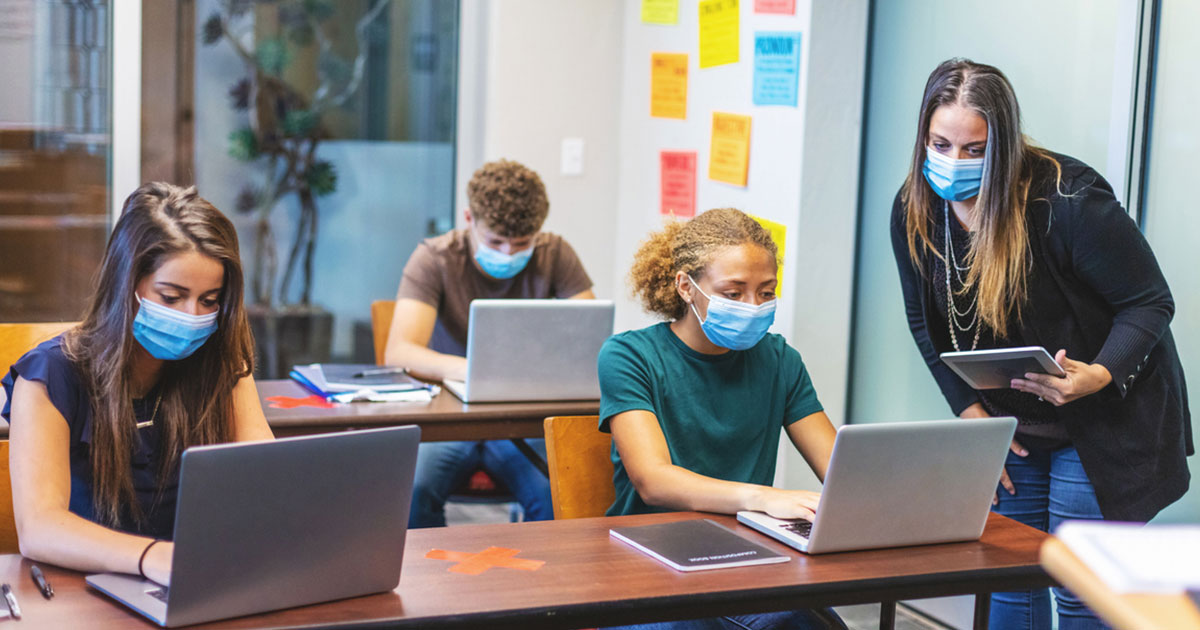Educational Resilience: Navigating Learning Amid the Pandemic

Adapting to Change: Education During the Pandemic
The global pandemic has reshaped the landscape of education, prompting a need for resilience, innovation, and adaptability. In this exploration, we delve into the challenges faced and the strategies employed in navigating education during these unprecedented times.
The Shift to Remote Learning: A New Educational Norm
The closure of schools and educational institutions prompted an abrupt shift to remote learning. Virtual classrooms, online lectures, and digital collaboration tools became the new norm. This transition required quick adaptation from educators, students, and parents alike, marking a significant evolution in educational methods.
Challenges of Remote Learning for Students
While remote learning offers flexibility, it comes with its set of challenges for students. Limited access to technology, the absence of a traditional classroom environment, and potential distractions at home pose hurdles to effective learning. Ensuring equitable access to education became a focal point during this shift.
Adapting Pedagogical Approaches for Virtual Settings
Educators had to rethink and adapt their pedagogical approaches to suit virtual settings. Strategies such as interactive online activities, virtual labs, and multimedia resources became essential in engaging students. The challenge was not only delivering content but also creating an interactive and participatory virtual learning experience.
Digital Inclusion: Bridging the Technology Gap
The pandemic emphasized the existing technology gap, making digital inclusion a critical consideration in education. Efforts were made to provide devices and internet access to students in need, ensuring that all learners have the tools required for effective participation in virtual classrooms.
Impact on Practical and Hands-On Learning
Certain disciplines heavily reliant on practical and hands-on learning faced unique challenges. Fields such as science, art, and vocational training required innovative solutions to replicate hands-on experiences in a virtual environment. Virtual simulations, at-home experiments, and creative projects became essential components of the adaptation process.
Supporting Educators: Professional Development in a Digital Era
Educators played a central role in the transition to remote learning. Professional development became crucial as teachers had to acquire new skills for effective online instruction. Training programs, workshops, and collaborative platforms facilitated the sharing of best practices and enhanced educators’ capabilities in a digital era.
Addressing the Emotional Well-being of Students
The upheaval caused by the pandemic impacted not only the academic but also the emotional well-being of students. The lack of social interactions, uncertainties about the future, and the challenges of virtual learning contributed to heightened stress and anxiety. Comprehensive support systems were necessary to address these concerns.
Parental Involvement: A Key Element in Educational Resilience
With students learning from home, parental involvement became more integral than ever. Parents took on roles as facilitators, providing technical support, creating conducive learning environments, and collaborating with educators. This partnership between parents and educational institutions played a crucial role in the success of remote learning.
Reimagining the Future of Education
The challenges of education during the pandemic spurred discussions about reimagining the future of education. Concepts such as blended learning, incorporating digital tools in traditional classrooms, and fostering a more inclusive and flexible educational system gained prominence. The pandemic became a catalyst for envisioning a more resilient and adaptive education landscape.
Education During Pandemic: A Catalyst for Innovation
As we navigate the complexities of education during the pandemic, the journey also unfolds as a catalyst for innovation. Stay informed about the evolving landscape of education at Education During Pandemic, and let us collectively shape an educational future that embraces resilience, adaptability, and inclusivity.
Adapting Education: Remote Learning Strategies Amid Pandemic

Adapting Education: Remote Learning Strategies Amid Pandemic
The COVID-19 pandemic has reshaped education, prompting a surge in remote learning. In this article, we explore effective strategies for adapting to the challenges posed by the pandemic and ensuring the success of remote learning initiatives.
Technology Integration: The Backbone of Remote Learning
Integrating technology into education has become paramount in the era of remote learning. Platforms such as video conferencing, online collaboration tools, and learning management systems facilitate seamless communication and interaction between students and educators. Embracing technology is the first step in creating a dynamic and engaging remote learning environment.
Synchronous and Asynchronous Learning: Balancing Flexibility and Interaction
Remote learning allows for a blend of synchronous and asynchronous learning experiences. Synchronous sessions, conducted in real-time, offer opportunities for live interactions, discussions, and immediate feedback. Asynchronous learning, on the other hand, provides flexibility by allowing students to access materials and complete tasks at their own pace. Striking a balance between these approaches accommodates diverse learning preferences.
Engagement Strategies: Fostering Active Participation
Maintaining student engagement is a challenge in remote learning environments. Educators employ various strategies, such as interactive quizzes, polls, and virtual group activities, to foster active participation. Creating a sense of community through online forums and discussion boards also enhances student engagement and contributes to a more enriching learning experience.
Clear Communication: Building Transparent Connections
Clear communication is fundamental in remote learning. Educators must articulate expectations, assignment details, and communication protocols clearly. Regular updates on schedules, assessments, and any changes in the course structure build transparent connections between educators and students. Effective communication minimizes confusion and ensures everyone is on the same page.
Flexible Assessments: Adapting Evaluation Methods
Traditional assessment methods may need modification in a remote learning setting. Implementing a variety of assessment tools, such as online quizzes, written assignments, and project submissions, accommodates different learning styles. Flexibility in assessment methods ensures that students can demonstrate their understanding in ways that suit their strengths.
Professional Development for Educators: Enhancing Digital Literacy
Educators play a crucial role in the success of remote learning. Providing professional development opportunities to enhance digital literacy and teaching skills is essential. Training programs on effective online instruction, technology usage, and adapting curriculum for remote environments empower educators to deliver high-quality education.
Equitable Access to Resources: Addressing Disparities
Ensuring equitable access to resources is a priority in remote learning. Schools must consider the varying levels of access to technology and the internet among students. Implementing solutions, such as providing devices or internet connectivity assistance to those in need, helps address disparities and ensures that all students can fully participate in remote learning.
Supporting Student Well-being: Prioritizing Mental Health
The shift to remote learning can impact student well-being. Educators and institutions must prioritize mental health by creating a supportive environment. This includes fostering open communication, providing resources for stress management, and recognizing the challenges students may face in adapting to remote learning.
Parental Involvement: Collaborating for Success
Remote learning requires collaboration between educators and parents. Keeping parents informed about the curriculum, expectations, and providing guidance on supporting their children’s learning at home fosters a collaborative approach. Regular communication channels, such as virtual parent-teacher meetings, strengthen the partnership between home and school.
Accessing Remote Learning Strategies Pandemic: A Resource Hub
For additional insights and resources on effective remote learning strategies during the pandemic, consider exploring Remote Learning Strategies Pandemic. This centralized hub provides valuable information, best practices, and support for educators, students, and parents navigating the challenges of remote learning in these unprecedented times.




